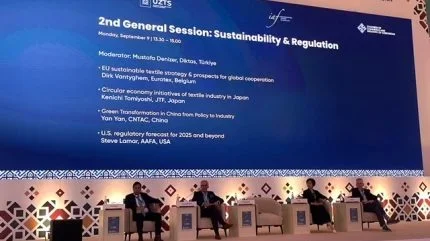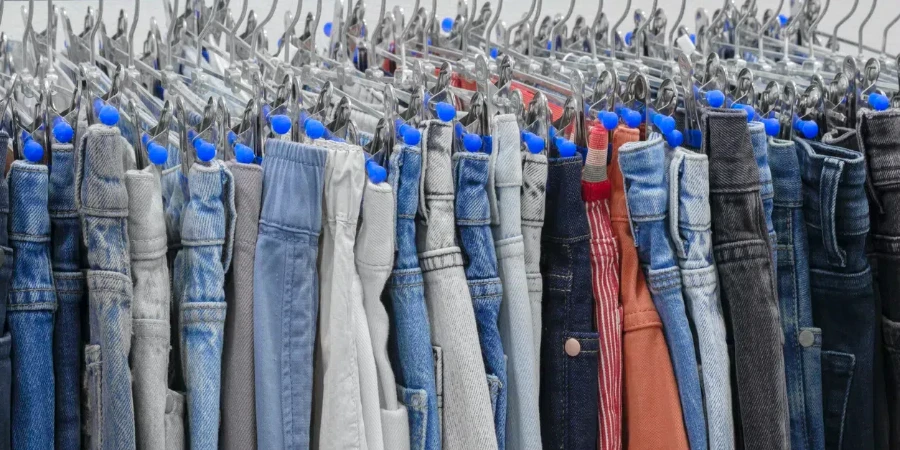The EU is leading the way on sustainability regulation but will the rest of the world adopt the same rules or will global apparel manufacturers have to overcome disjointed requirements by region in the future? Just Style investigates.

Europe is the leader of the pack when it comes to establishing and implementing sustainable regulation for the apparel industry and it applies to anyone wishing to buy or sell products within the European Union (EU).
Euratex’s director general Dirk Vantyghem says there are now 16 pieces of legislation, but he argues the biggest piece of the puzzle is the Ecodesign for Sustainable Products Regulation (ESPR), which forces all suppliers to produce higher quality products in terms of durability and sustainability.
He explains this legislation was adopted a few months ago and is being translated for apparel and textiles with discussions taking place right now on how many times a tshirt should have to be washable before it loses its characteristics.
The EU is also introducing Digital Product Passports (DPP), which means detailed product information including how it was made and where will be attached to every garment.
“It forces the entire supply chain to share data and standardise data,” notes Vantyghem.
The EU is also keen to tackle the apparel sector’s waste problem with Vantyghem adding: “It will be decided very soon that an Extended Producer Responsibility (EPR) system will be put in place and we’re looking at how it will involve the textile industry.”
Plus, it is introducing due diligence legislation, which puts more responsibility on brands and manufacturers to comply with social regulations and environmental standards across the whole supply chain with consequences for those who don’t.
Vantyghem points out: “The landscape in terms of EU regulation is changing dramatically and pushing all of us towards more sustainability and more transparency and higher quality.”
Are other countries following the EU’s lead on sustainable regulation?
The challenge for global apparel manufacturers is the EU might be leading the way but other countries and regions are not following the same rules — they are creating their own.
One benefit of the EU’s set-up is that all 27 member states within its single market agree to follow the same regulations, however, in the US individual states are creating their own pieces of sustainable legislation.
California and New York are the states to watch with American Apparel & Footwear Association’s president and CEO Steve Lamar highlighting legislation will take effect in these places a lot sooner than at the federal or national level.
His advice to fashion sourcing executives and suppliers is to clue up on US geography as it’s likely regulation will continue to take place primarily at a state level.
Given it’s an election year in the US he adds: “There will be other proposals but next year taxes will be the number one effort of US businesses”.
On the plus side, he shares: “Ten years from now we’ll look back and find this was the time our sector became the most transparent and traceable.”
At the federal level or country level the US does have the Uyghur Forced Labor Prevention Act (UFLPA), which focuses on forced labour.
It does not have DPP but it does have some members of congress working on a voluntary equivalent and California has just passed its first law to collect waste, but Lamar is quick to add: “It’s a collection bill – not a recycling bill”.
Greenhouse gas emissions is another area with lots of activity, but again it will take place in California a lot sooner than across the US as a whole.
Lamar explains: “There are more efforts to do reporting as products come in through the border and one of the areas we’re optimistic about is making sure that online marketplaces and third party ones, which sell others’ products, will be responsible for what they sell.”
Japan is another case in point for a country that is going down its own path when it comes to sustainability. It is focused on becoming carbon neutral by 2050 and the government has guidelines for responsible business conduct to protect human rights within its industries, including textiles and apparel.
Japan Textile Federation executive vice president Kenichi Tomiyoshi points out the textile industry is central to policy in Japan.
The Japanese government’s Circular Economy Vision 2020 sets out five key industries, including textiles and its goal is to strengthen the textile sector and expand into new markets by 2040 with a policy based on promoting its sustainability ethos.
Japan already has strong credentials when it comes to PET recycling but it is also keen to improve circularity within the textile and apparel industry. To do this, it is sorting clothes waste and separating materials for fibre-to-fibre recycling.
Meanwhile, China, which is by far the world’s largest apparel sourcing base is also forging its own path when it comes to sustainability legislation.
Yan Yan, who is director of the Office for Social Responsibility at the China National Textile and Apparel Council (CNTAC), explains China already has many policies relating to sustainability.
The most recent policy was launched on 30 July this year and it is a dual control system to improve carbon emissions.
China also has a green energy policy with Yan noting that based on CNTAC’s assessment about 65% of the carbon footprint in China’s apparel and textile industry is from energy usage so she says making the energy “greener” is crucial.
China’s first national policy on a circular economy has important goals with Yan sharing its aim is for the recycling rate to reach 25% by 2025. Plus the country’s policy on ESG and disclosure is moving from voluntary to mandatory.
She adds that China has been working with various stakeholders to launch pioneering practices on ESG and circularity, including a toolkit to create carbon neutral standards across the whole supply chain
Yan continues: “We’ve set up a carbon disclosure for companies. We’ve also worked with several brands and realised we need a better model to make recycling waste more scalable.”
She has also started DPP work as digital IDs are going to be introduced in China next year that will allow products to be fully identifiable and show their recycling capabilities.
Does the world want to align on sustainability regulation?
The US’s Lamar is optimistic that there will be opportunities for the US to align with the EU on sustainability regulation.
He shares: “It’s great to look at what Europe, China and Japan are doing but the industry needs to be better engaged.”
He admits the US at this point in time is not engaged, but on a global level, we also need “better” engagement.
“We need a stronger buyer-supplier partnership and we need to make sure we can rely on each other and trust each other to get the job done,” he says.
Japan’s Tomiyoshi agrees and sees standardisation as key. He explains Japan would like to standardise traceability and it is also discussing eco-design in textile products, which is similar to what is being introduced in the EU.
It is important to note the countries dictating what is required in terms of sustainability legislation are not always the ones that produce the goods.
Earlier this year the International Apparel Federation’s president Cem Altan told Just Style ESG legislation targeted at the fashion sector must be distributed fairly across the supply chain to avoid it failing completely.
Altan shared he is on a mission to get engagement from brands and retailers and has suggested joint programmes to tackle upcoming legislation.
Source from Just Style
Disclaimer: The information set forth above is provided by just-style.com independently of Alibaba.com. Alibaba.com makes no representation and warranties as to the quality and reliability of the seller and products. Alibaba.com expressly disclaims any liability for breaches pertaining to the copyright of content.




